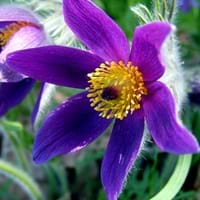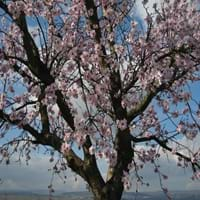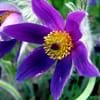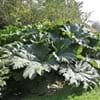Life Span
Annual and Perennial
Perennial
Origin
Europe, Eastern Europe, Southern Europe, Western Europe, United Kingdom
Northern Africa, Western Asia
Types
Pulsatilla vulgaris, Pulsatilla vulgaris rubra, Pulsatilla vulgaris alba
Bitter Almonds, Chinese Almonds, Green Almonds
Number of Varieties
Not Available
Habitat
meadows, Slopes, Wooded slopes
Dappled Shade, Sunny Edge, Woodland Garden Secondary
USDA Hardiness Zone
5-7
5-8
Sunset Zone
2b, 3a, 3b, 4, 5, 6, 15, 16, 17
2b, 3b, 8, 9, 10, 12, 13, 14, 15, 16, 19, 20, 21
Habit
Clump-Forming
Oval or Rounded
Flower Color
Indigo, Purple, Violet
White, Light Pink
Flower Color Modifier
Not Available
Bicolor
Fruit Color
Greyish Brown
Green
Leaf Color in Spring
Light Green
Light Green
Leaf Color in Summer
Light Green
Light Green
Leaf Color in Fall
Light Green
Light Green, Yellow green
Leaf Color in Winter
Light Green
Light Green
Leaf Shape
Rosette
Egg-shaped
Plant Season
Spring
Spring, Fall
Sunlight
Full Sun
Full Sun
Type of Soil
Loam, Sand
Loam, Sand
The pH of Soil
Neutral, Alkaline
Neutral
Soil Drainage
Well drained
Well drained
Bloom Time
Early Spring, Spring
Early Spring, Spring, Late Winter
Tolerances
Drought
Drought
Where to Plant?
Ground, Pot
Container
How to Plant?
root cutting, Seedlings
Budding, Grafting
Plant Maintenance
Medium
Medium
Watering Requirements
Medium
Do Not over Water, Water Deeply
In Summer
Lots of watering
Lots of watering
In Spring
Moderate
Moderate
In Winter
Average Water
Average Water
Soil pH
Neutral, Alkaline
Neutral
Soil Type
Loam, Sand
Loam, Sand
Soil Drainage Capacity
Well drained
Well drained
Sun Exposure
Full Sun
Full Sun
Pruning
Remove damaged leaves, Remove dead branches, Remove dead leaves
Heading cuts, Remove damaged leaves, Remove dead branches, Remove dead leaves, Thinning
Fertilizers
All-Purpose Liquid Fertilizer
Apply 12-12-12 amounts
Pests and Diseases
Cutworms, Larvae of Agave Weevil
Almond brownline and decline, Almond kernel shrivel, Alternaria Leaf Spot, Hull rot
Plant Tolerance
Drought
Drought
Flower Petal Number
Single
Not Available
Foliage Texture
Fine
Medium
Foliage Sheen
Matte
Matte
Attracts
Not Available
Insects
Allergy
convulsions, Diarrhea, Not Available, Stomach pain, Vomiting
Diarrhea, Mild Allergen, Nausea, Swelling in mouth
Aesthetic Uses
along a porch, deck or patio, Showy Purposes
Beautification
Beauty Benefits
Not Available
Acne, Blackheads, Good for skin, Moisturizing, Prevents greying of hair
Environmental Uses
Air purification
Air purification
Medicinal Uses
Not Available
Antiemetic, Antitumor, Emollient, Nutritive, Pectoral
Part of Plant Used
Not Available
Seeds, Stem
Other Uses
Showy Purposes
Blended with water to make almond milk, Oil is used for aromatherapy, Used for making dark grey to green dye, Used for producing cooking oil
Used As Indoor Plant
No
No
Used As Outdoor Plant
Yes
Yes
Garden Design
Alpine, Mixed Border, Rock Garden / Wall
Edible, Fruit / Fruit Tree
Botanical Name
PULSATILLA vulgaris
PRUNUS dulcis
Common Name
Pasque Flower, wind flower, prairie crocus, Easter Flower, meadow anemone
Almond, Sweet Almond
In Hindi
Pasque Flower
मीठा बादाम
In German
Kuhschellen
Süße Mandel
In French
Pasque Flower
Amande douce
In Spanish
Pasque Flower
Almendra dulce
In Greek
Pasque Flower
Sweet Almond
In Portuguese
Pasque Flower
Amêndoas doces
In Polish
Sasanka
słodkich migdałów
In Latin
Pasque Flower
Almond Pulchra
Phylum
Vascular plant
Magnoliophyta
Class
Magnoliopsida
Magnoliopsida
Order
Ranunculales
Rosales
Family
Ranunculaceae
Rosaceae
Clade
Angiosperms, Eudicots
Angiosperms, Eudicots, Rosids
Subfamily
Not Available
Amygdaloideae
Number of Species
Not Available
Properties of Pasque Flower and Sweet Almond
Wondering what are the properties of Pasque Flower and Sweet Almond? We provide you with everything About Pasque Flower and Sweet Almond. Pasque Flower doesn't have thorns and Sweet Almond doesn't have thorns. Also Pasque Flower does not have fragrant flowers. Pasque Flower has allergic reactions like convulsions, Diarrhea, Not Available, Stomach pain and Vomiting and Sweet Almond has allergic reactions like convulsions, Diarrhea, Not Available, Stomach pain and Vomiting. Compare all the properties and characteristics of these two plants. Find out which of these plant can be used as indoor plant. If you are interested to decorate your house and garden, find out aesthetic uses, compare them and select the plant which will beautify your surrounding. Along with beautification, try comparing medicinal and edible uses of Pasque Flower and Sweet Almond and you can choose the plant having best and most benefits.
Season and Care of Pasque Flower and Sweet Almond
Season and care of Pasque Flower and Sweet Almond is important to know. While considering everything about Pasque Flower and Sweet Almond Care, growing season is an essential factor. Pasque Flower season is Spring and Sweet Almond season is Spring. The type of soil for Pasque Flower is Loam, Sand and for Sweet Almond is Loam, Sand while the PH of soil for Pasque Flower is Neutral, Alkaline and for Sweet Almond is Neutral.
Pasque Flower and Sweet Almond Physical Information
Pasque Flower and Sweet Almond physical information is very important for comparison. Pasque Flower height is 12.70 cm and width 15.20 cm whereas Sweet Almond height is 760.00 cm and width 760.00 cm. The color specification of Pasque Flower and Sweet Almond are as follows:
Pasque Flower flower color: Indigo, Purple and Violet
Pasque Flower leaf color: Light Green
Sweet Almond flower color: White and Light Pink
- Sweet Almond leaf color: Light Green
Care of Pasque Flower and Sweet Almond
Care of Pasque Flower and Sweet Almond include pruning, fertilizers, watering etc. Pasque Flower pruning is done Remove damaged leaves, Remove dead branches and Remove dead leaves and Sweet Almond pruning is done Heading cuts, Remove damaged leaves, Remove dead branches, Remove dead leaves and Thinning. In summer Pasque Flower needs Lots of watering and in winter, it needs Average Water. Whereas, in summer Sweet Almond needs Lots of watering and in winter, it needs Average Water.





